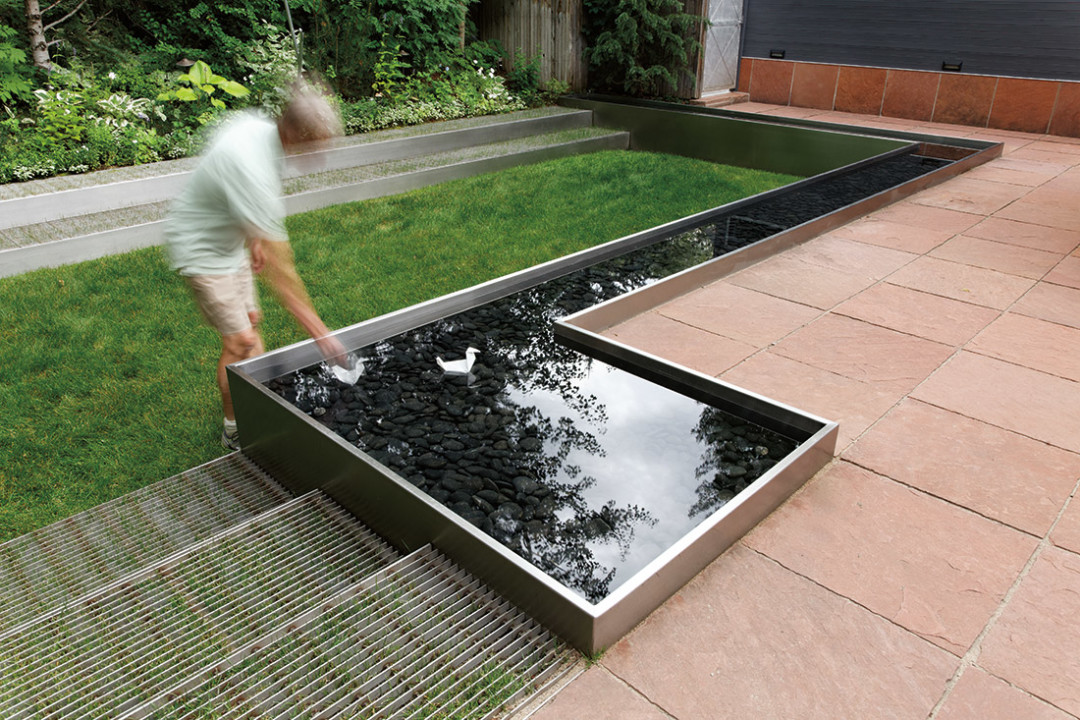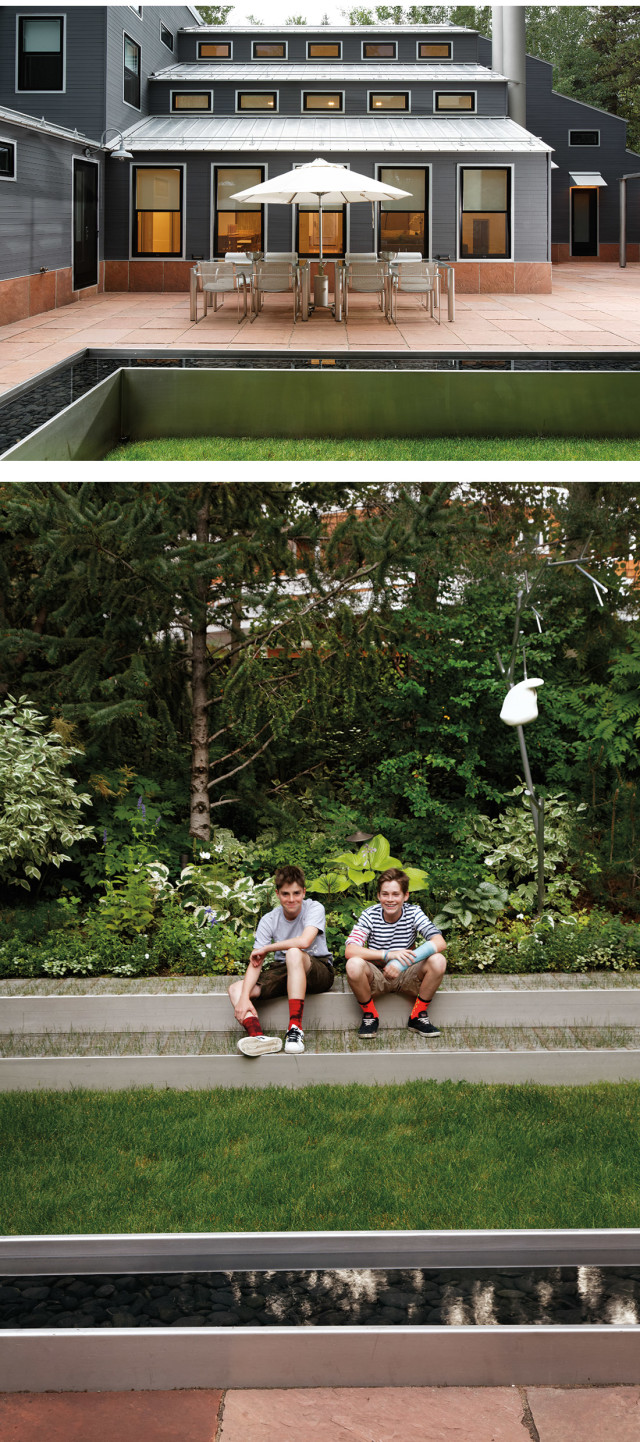Scenes from a Sunken Grass Garden in the West End

Image: Ross Kribbs
In the modest backyard of her West End home, Judith Neisser envisioned a minimalist courtyard fit for cocktail parties. But most important to the prominent Chicago critic–turned–collector of contemporary art was a striking element that would get guests talking.
To help fulfill those wishes, Maria Smithburg, president of Artemesia Landscape Architecture, dug deep—many feet, in fact—to create a sunken grass garden bordered by water reflecting the sky, an ever-changing Zen-like tableau in a neighborhood known for ornate Victorian style.

Image: Ross Kribbs
Metal mesh steps descend into the rectangular garden from a stone patio, ascending up and out on the other side. “The bleachers,” as Smithburg calls the feature, mirror the home’s lofty profile with their lush, amphitheater-like seating. (Weatherproof cushions add extra comfort for those lounging on the steps.) A border of graduated shrubs and dark evergreens at the perimeter screen out neighbors and exaggerate this low-high effect, which will only intensify as the trees mature.
“Any time you develop changes of grade, there’s a perception of a bigger piece of land,” Smithburg says. “This escalating elevation added another dimension to the garden. You never see the boundary or get a sense of limitations.”
As for that coveted conversation piece, artist-sculptor Travis Fulton and engineer Peter Hutter, the visionaries behind Aspen’s Dancing Fountain, designed an L-shaped reflecting pool fit for a city museum courtyard. Some fifty feet long and rising eighteen inches above the sunken lawn, the stainless-steel structure echoes the roofline of the home, which was designed by architectural firm Tigerman-McCurry and is reminiscent of an agricultural silo.
“The water feature creates a boundary, but more soft-looking because it’s water as opposed to a wall,” Smithburg says. Mexican La Paz stones—some of the darkest found in nature—sit below the water’s surface, lending an illusion of depth.
“Normally people go for waterfalls: they’re attracted to the sound,” Smithburg says. “I wanted more to capture the sky. Especially on a day with some clouds, you see this moving landscape across the water.” Come nightfall, white LED lights beneath the water dazzle against shiny metal, mimicking landscaping beyond.
“The garden became monochromatic—almost like a black-and-white,” Smithburg marvels. The Chicago-based architect admits her greatest challenge was sourcing colorless, shade-loving flowers for Aspen’s mountain climate. Finding them gave her client something more than a conversation starter: “It’s very calm and soothing,” Smithburg says. “I redesigned her garden to go with her art collection.”













































